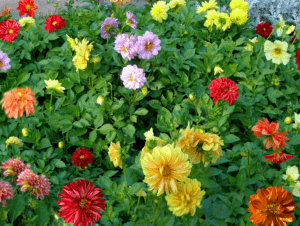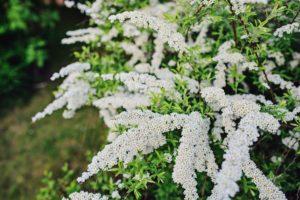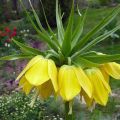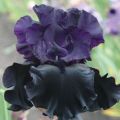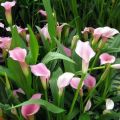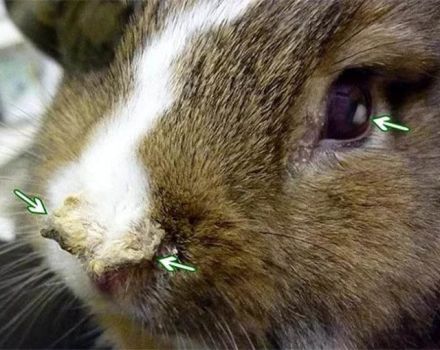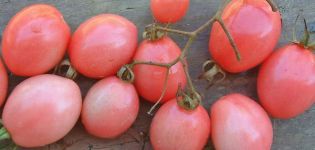Description of the best varieties of perennial cornflower, cultivation and care
Among the wildflowers, cornflowers stand out for their bright blue heads. The plant has been cultivated for a long time, and the perennial cornflower has firmly occupied its niche in decorative floriculture. The popularity of the plant is associated with the unpretentiousness of the decorative culture, the variety and brightness of the color of flowers.
Description and features
Herbaceous plant of the Asteraceae family is interesting with baskets of thinly cut petals. Annual and perennial plant species has a tall erect stem, reaching a height of 80-100 centimeters. The stem forks in the middle. Thin lanceolate leaves of cornflower are covered with hairs below.
The cornflower blooms all summer. During this period, the marginal asexual petals are colored blue, white, red. In the middle of the basket, they are tubular, dark purple.
The garden species of cornflower has a greater variety of colors than the field one. Breeders have bred varieties that have not only a simple flower, but also double and semi-double.
If in the wild you have to deal with cornflower like a weed, then in the garden the bushes take their place in landscape design. It is interesting that the culture grows everywhere, as it is unpretentious to growing conditions, climate, soil.
Kinds
Decorative perennials differ little in the structure of the inflorescence. The differences lie in the splendor of the petals, their color, the height of the stem.
Blue
A plant with a branchy, rough stem is considered a weed. It grows in Europe, it especially loves to be in the fields where cereals grow. Flower baskets with blue petals at the edges are wrapped in membranous sheets laid with tiles. In the middle of the inflorescence, tubular petals of a purple tone. It is this type of cornflower that is used for medicinal purposes.

White
A rare species of cornflower is listed in the Red Book. It is found in the wild in the highlands of the Caucasus and Iran. Dense bushes from 30 to 55 centimeters high have dissected leaves. The leaf plates are dark green above, and whitish below. The diameter of the inflorescences reaches 4 centimeters.
Mountain
This type of herb is found in the mountains of Western Europe. The flower has an erect stem without lateral branch, the height of which is from 30 to 70 centimeters. Whole leaves of the lanceolate type are collected in a basal rosette. The stem is crowned with a basket with an inflorescence diameter of 6 centimeters. Outwardly, mountain cornflower looks like blue, but it belongs to perennial grasses, in contrast to the field.
Yellow
The bright yellow inflorescences of the plant are quite large, up to 7 centimeters in diameter. The perennial blooms from July to August. It can be a decoration of the site thanks to lush bushes. In nature, the yellow cornflower is found in the territory from the Urals to the Far East.

Big-headed
Cornflower is called large-headed grossgeamia. The inflorescences are in the shape of a ball, they are large, and from below are wrapped in scales of green plates. Flowers stand in cut for a long time and can become a decoration of the room.
Oriental
Perennial:
- short rhizome;
- hairy stem 40-90 centimeters high;
- pinnately-separated leaves on long petioles;
- a basket of inflorescences with a diameter of 3 centimeters;
- intense yellow corolla.
The species grows in the steppes, propagating by seeds.
Lugovoi
The weed plant is found on the sides of the roads, on forest edges. Lilac-pink inflorescences-baskets consist of 2 types of flowers. At the edges, the petals are asexual, like a funnel. In the center are modest tubulars, which are needed for the reproduction of cornflower.
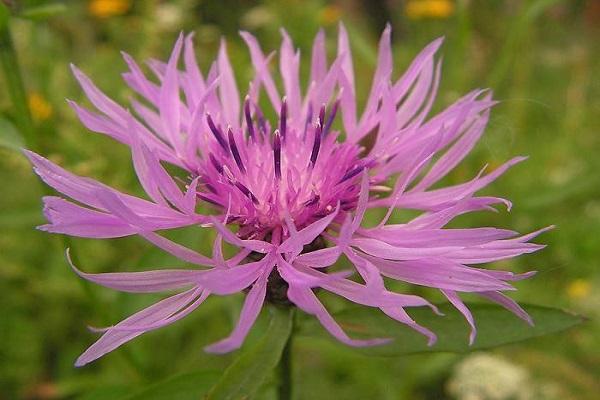
Field
The herbaceous annual or biennial is used in medicine. Its blue or blue heads are found in cereal-planted fields. Growing, the weed destroys part of the crop. Cornflower is actively used in folk medicine.
Whitened
The flower is famous for the beauty of its petals and leaves. Bright pink flowers sit singly on tall stems. Basal leaves are collected in a socket. The plates are green on top and covered with whitish felt below. Designers appreciate the cornflower for the neatness of the bush, its sphericity and silvery shades.
Spreading
In a plant, the stem branches out at the very base. The bush differs in small baskets of flowers. The color of the petals is pale pink or white. Cornflower belongs to biennial crops, blooms from June to autumn. It grows abundantly in wastelands, near railways, near highways.
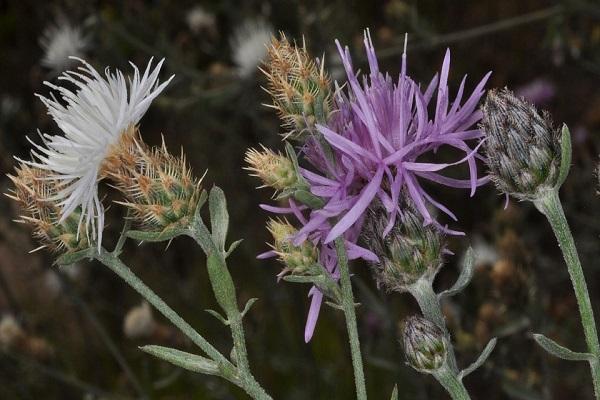
Pink
The perennial reaches a height of one meter. Large flowers of a rich pink color appear on top. A feature is the swelling of the stems under the inflorescences.
American
The decorative cold-resistant species grows on the prairies of North America. On erect stems 1 meter high, there are single flowers up to 8-10 centimeters in diameter. The color of the petals is pale lilac.
Sowing
The blue cornflower is a cultivated species. He tolerates wintering well and is unpretentious in care.
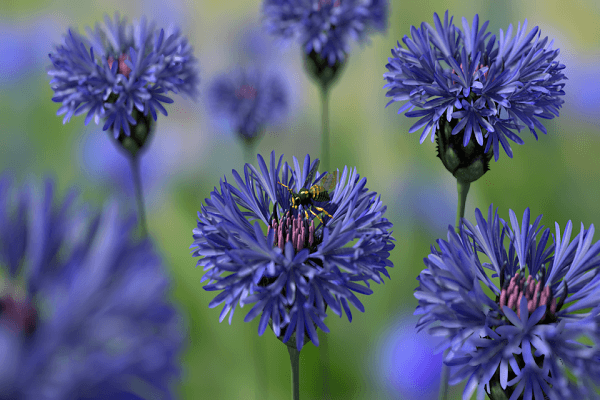
Popular varieties
Garden species of cornflowers have many varieties. But all varieties are resistant to drought and sudden temperature fluctuations. They can bloom profusely in barren areas.
Pindskiy
Low bushes of decorative culture will adorn any flower bed. In May, lemon-yellow flowers appear on the stems. Cirrus cut leaves during the growing season change their color from light green to dark.
Blue angel
A slender branchy plant pleases all summer with terry flowers of sky-blue color. The culture tolerates drought well, frost-resistant. Prefers sunny areas, unpretentious to soil content.
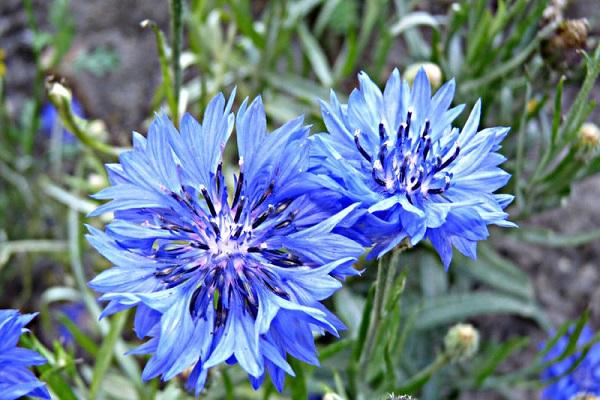
John Coates
The plant has large lilac-pink inflorescences with a white center. The variety belongs to honey plants. It is used for planting in mixborders and mixed beds.
How to plant in open ground
If you want to ennoble the abandoned areas in the garden where nothing grows, then it is best to plant cornflowers there.The garden variety of plant varieties allows you to make a corner of the garden bright and diffuse fragrance.
Timing
Cornflower seeds need warmth to plant. It is best to sow an ornamental plant in late April or early May. The dates are shifted if the soil is poorly warmed up.
Cornflowers are planted with cuttings in the fall, in mid-October.

Seat selection
The unpretentiousness of perennial garden species is noted. The main thing for cornflowers is that the site has:
- good illumination;
- loose light soil;
- neutral acidity;
- humus layer.
You can plant flowers in flower beds where partial shade does not last long. But the plant blooms better in the light.
Soil requirements
Sandy, dry soils are suitable for cornflower. The flower grows worse on clay soil. Before sowing seeds, they dig up a plot, harrow, breaking large lumps of earth. If nothing grew in this place, then fertilizer must be applied. You should scatter humus or compost before digging a flower garden.
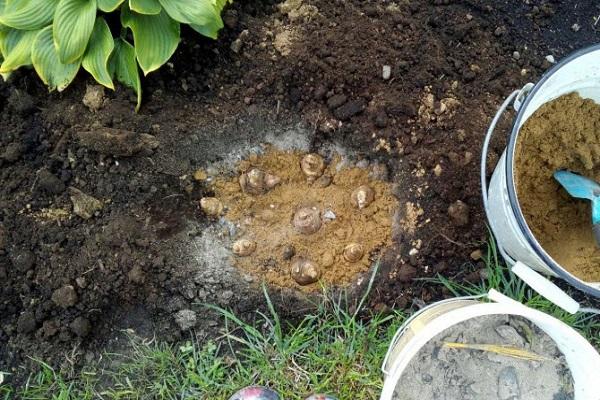
Landing scheme
Flower seeds are planted to a depth of 2-3 centimeters. The distance between them should be 20-30 centimeters. The bushes should be planted so that the growth bud is at the level of the soil surface. If the roots of the cornflower are horizontal, then the bud is lowered when planting 2-4 centimeters deep. The distance between the seedlings is not less than half a meter.
Reproduction
Plants are transplanted so as to reproduce flowers. There are several breeding methods. For novice gardeners, the vegetative method is suitable. It gives good results if the transplant rules are followed.
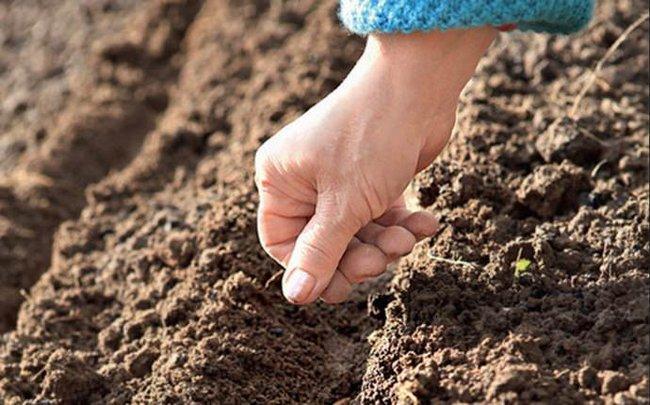
Root cuttings
This method involves the selection of a healthy bush with developed lateral shoots. At the end of September, an operation is performed by digging up the roots of a cornflower with stems. Cuttings should be cut into 10 centimeters long with 2-3 buds. Then they are planted in moist and well-fertilized soil. Before winter begins, the cuttings will take root well.
Dividing the bush
You can divide the bush by carefully freeing part of it from the soil. It is necessary to shorten the ground part of the cornflower. Then shoots are separated from the mother bush, planted in a prepared place, and the rest is covered with nutritious soil and watered. It is better to choose sunny weather with stable temperatures for breeding..
Seeds
Seeds collected in autumn are dried. In the spring, they must be soaked and placed on a prepared bed. In regions with cold springs, seedlings should be planted in April. In May, after warming, cornflower seedlings are planted in a permanent place.

Abundant self-seeding
For lazy summer residents, this is the best way to breed cornflowers. Flowers drop seeds to the ground in the fall. In the spring, you can see the emergence of young shoots. They are carefully dug out together with an earthen clod on the roots and placed on a flower bed.
Care
There is nothing difficult in caring for decorative perennials. It is only necessary to carry out the usual procedures on time so that the plants have enough moisture, light, air and nutrition.
Watering
Moisture for flowers should be in moderation. Water the flowerbeds with cornflowers as the top layer dries. It is impossible to fill in the plantings, otherwise the root system will rot.
The plant tolerates the lack of watering better than its excessiveness.
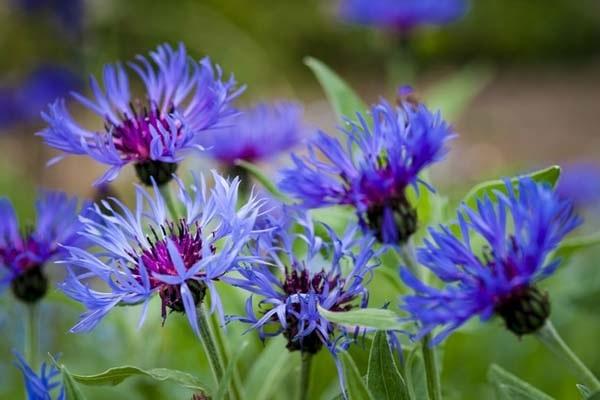
Loosening and weeding
It is necessary to loosen the ground around the bushes constantly. This is especially important after heavy rains, abundant watering.
Flowering bushes grow poorly if there are a lot of weeds nearby. It is necessary to pull them out as a source of the spread of diseases and pests.
Pruning
To create a neat bush, cornflowers are cut, removing faded buds. In the spring, diseased and damaged stems are removed. Such operations will help the flower garden or flowerbed look beautiful and well-groomed.
Top dressing
Cornflowers need fertilizer during the growing season.Every 2-3 weeks, the bushes are fed with complexes of mineral fertilizers. Before wintering, compost, humus, potassium salt and superphosphate are necessarily introduced into the soil. You can feed the cornflowers with wood ash.

Protection against diseases and pests
Decorative culture rarely gets sick, for which it is appreciated among flower growers and designers. In rare cases, cornflower gets sick with a fungal infection if the air temperature drops and humidity increases.
Spider mite
You can determine the appearance of a pest on cornflowers by the cobweb on the back of the leaf. At the same time, the plant begins to lag behind in growth and development. Stop the harmful effect of insects by spraying with insecticides or tobacco decoction.
Fusarium
When the leaves of a cornflower become covered with brown spots, and then there are prominent black pycnidia on them, then this Fusarium fungus is activated on the plants. As a result of infection, cornflowers wither and die. Fight against the fungus by spraying with the drug "Fundazol" or "Topsin N". For prevention, you should sprinkle the bushes with wood ash.
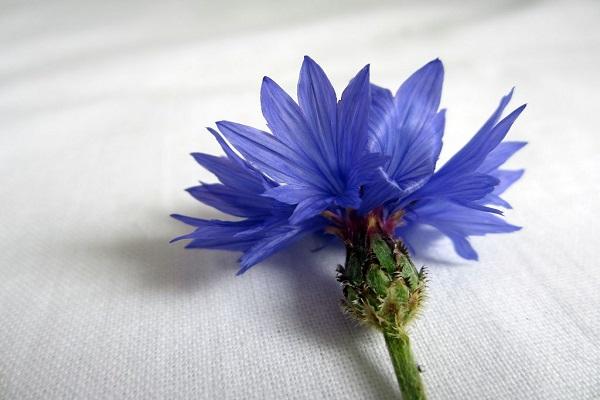
Growing features
No special knowledge is required to grow cornflowers. You need to choose the right place for a perennial. Many people use plants to decorate neglected areas on the site. Blooming cornflowers look very beautiful on the site of the former dump or near the fence, where only weeds grew. Depending on the variety, they try to plant it correctly. For tall cornflowers with horizontal roots, you need more free space. Low-growing cornflowers with vertical root shafts can be planted more compactly.
Collection and storage of seeds
Cornflower seeds should be collected after the plants have faded. The readiness of the seeds is determined by the dryness of the seed capsule. The seeds must be dried in a well-ventilated place. Store them in a cardboard box or canvas bag. They are suitable for planting for 3 years.
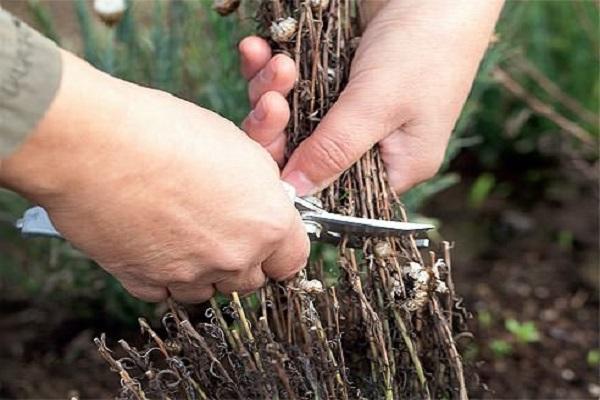
Application
Cornflower flowers are of great importance in the treatment of many diseases. The herb contains such substances that are needed for the preparation of alcoholic beverages, cosmetics.
Traditional and practical medicine
For medicinal purposes, blue cornflower, which grows in the field, is used. For application, it is necessary to collect the extreme asexual petals during flowering. It is necessary to dry the raw materials in the attics, where it is well ventilated.
Infusion of flowers is used in the treatment of:
- chronic kidney disease;
- inflammation of the bladder, urinary tract;
- heart disease, arrhythmias;
- jaundice.
Cornflower is a part of medicinal preparations to increase appetite, improve digestion, reduce uterine bleeding.
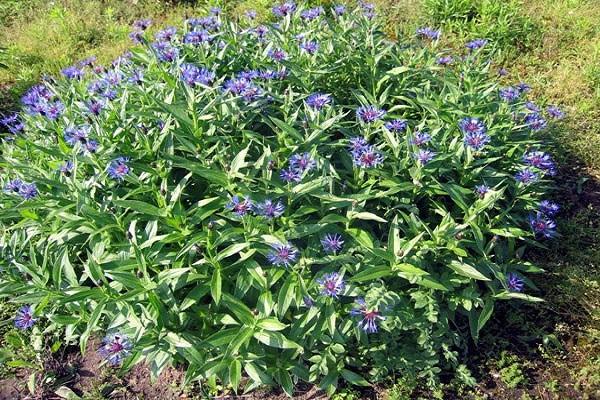
The infusion is prepared from 1 teaspoon of flowers per 250 ml of boiling water. It should be infused for an hour in a closed container. She advises to drink a diaphoretic, diuretic, anti-febrile remedy, 50 ml 15-20 minutes before meals, 3 times a day.
Crushed cornflower leaves are used as a compress, applied to wounds. Conjunctivitis, blepharitis, barley are treated with lotions from the infusion of flowers. They are used for night blindness.
For decorative purposes
Dried flowers are used to decorate the premises of the house. Cornflowers are plants that can be dried for various crafts, winter bouquets. It is necessary to dry the flowers so that the petals do not lose their integrity and color. To do this, use a drying method between dense sheets of cardboard, in sand or semolina.
Liquor and vodka industry
Blue cornflower honey has a greenish-yellow color, and its taste is comparable to the bitter taste of almonds. Therefore, to create an original composition, this herbal component is added to liqueurs and tinctures.
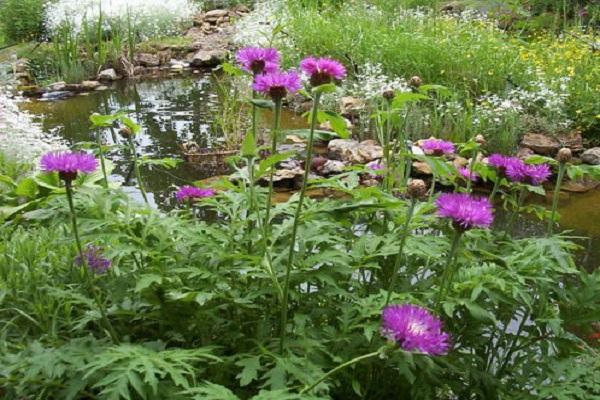
Cosmetology
To improve the condition of the skin, eliminate oiliness, close wide pores on the face, use an infusion of cornflower flowers. 3 tablespoons of dried petals pour 100 ml of boiling water. After cooling, add 50 grams of honey to the liquid.The mask is applied to the face, washing off with warm water after half an hour.
Cornflower ice is also prepared from the infusion, which is used to wipe the face in the morning.
Landscape design
Garden perennials are needed to update the relief of the site, reservoirs. The foreground in the flower garden can be occupied by medium-sized cornflowers: meadow, mountain, whitewashed. You can dilute the planting with white daisies, hybrid cinquefoil. In rockeries, islands of cornflowers look bright spots. Field plant species are chosen for a rustic garden style.
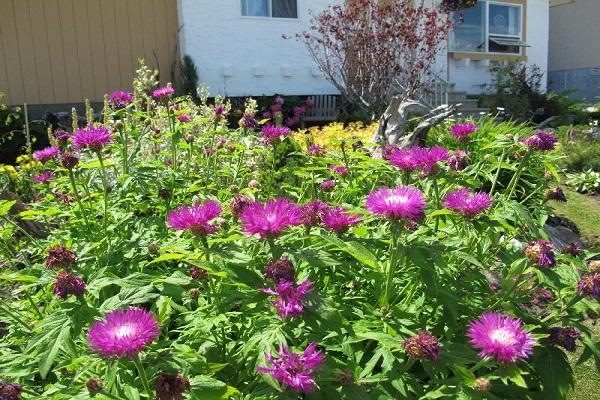
Natural dye
The coloring matter is in the petals of the cornflower. They can be used for dyeing fabrics, wool. To obtain a solution, it is necessary to pour 100 grams of raw materials with a liter of water and bring to a boil. Simmer over low heat for half an hour. After filtering, it is poured again and this operation is repeated again. Light wool is best dyed with a decoction of cornflower flowers than fabric. It becomes blue, sky-colored.
